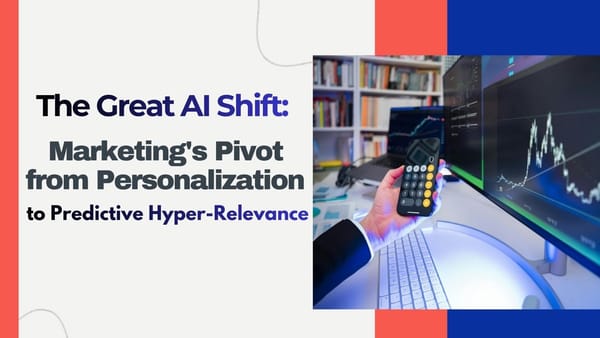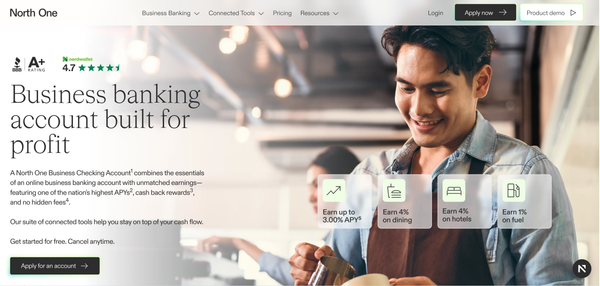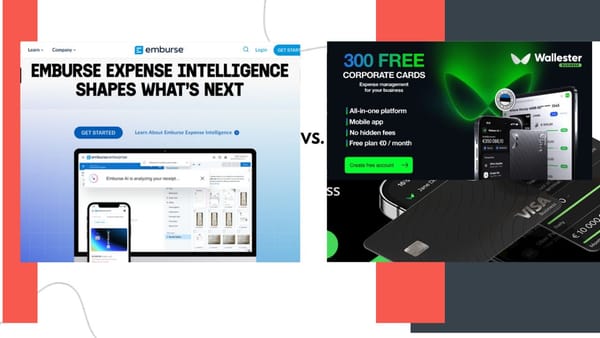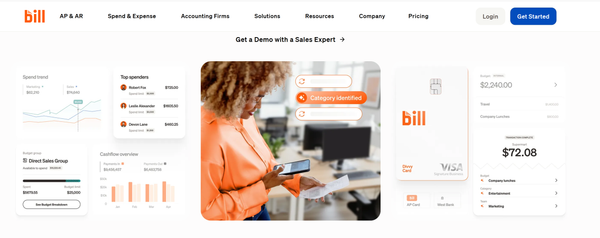15 Ways to Lower Insurance Customer Acquisition Costs With Targeted Campaigns
Lower your insurance customer acquisition costs (CAC) using targeted campaigns, affiliate strategies, and smarter marketing funnels. Actionable, data-driven insights await.
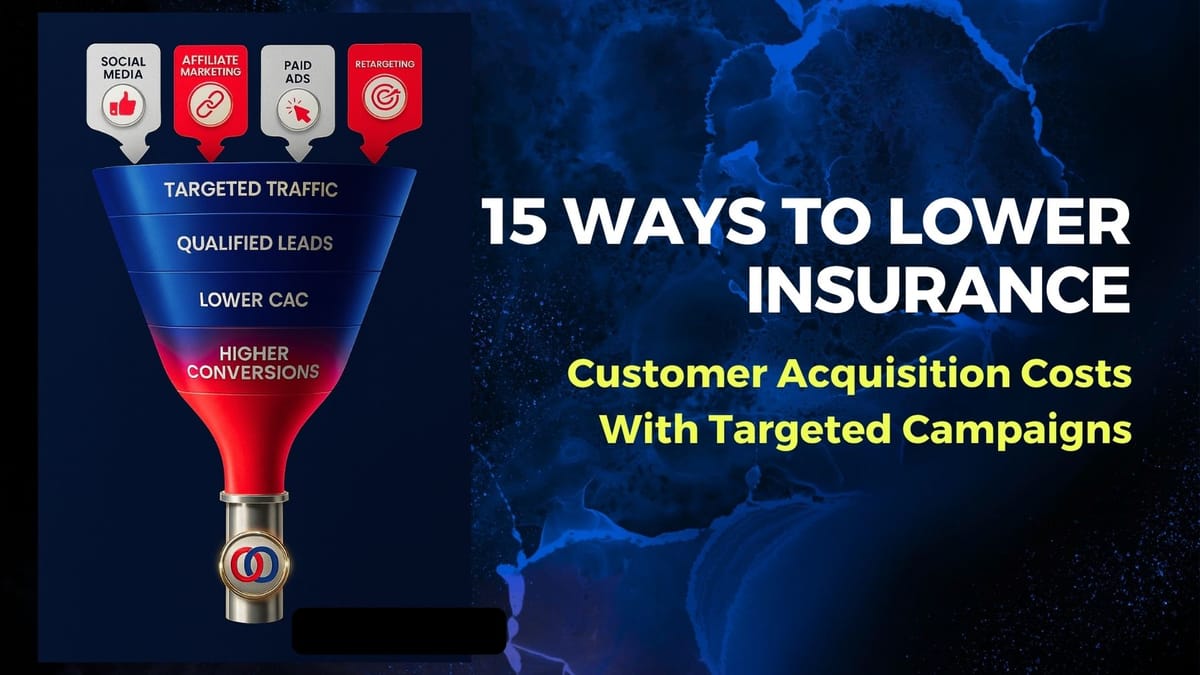
🔥 Did you know that insurance CAC (Customer Acquisition Cost) can reach $400–$900 per policyholder, and sometimes climb even higher? For digital-first insurers, that’s margin-crushing—unless you master targeted acquisition strategies.
"Insurance brands today aren't just competing on premiums — they're competing on acquisition efficiency."
Customer acquisition costs (CAC) in the insurance industry have soared. Whether you're a traditional agency or an agile insurtech startup, you're likely facing one of the same pressing challenges: how do you reduce CAC without sacrificing quality leads?
In an industry where margins matter and regulation limits your reach, targeted campaign strategies are no longer optional — they’re essential.
Why You Should Care
- You pay 7–9× more to win a new insurance customer than to keep one
- Average CAC for auto ranges from $300–$800, homeowners $300–$700
- Rising search ad costs (e.g., keywords lifting from $20 to $40/day to $1,000+)
High CAC not only slashes profit, but it also throttles growth. But guess what? You can slice that cost through smarter, targeted campaigns that deliver high ROI.
This post outlines proven, practical, and scalable ways to bring down your insurance CAC using digital performance tactics, precision targeting, and partnership marketing strategies — including a real-world example of how Bloomclicks helped Root Insurance achieve a lower cost-per-acquisition with higher conversion rates.
🧠 Understanding Customer Acquisition Cost (CAC)
Customer Acquisition Cost (CAC) is the total cost of convincing a new customer to purchase your insurance product. It includes every dollar spent on marketing, sales, advertising, and technology used to acquire policyholders.
For insurance businesses, CAC isn't just a number—it reflects how efficiently you're turning leads into long-term customers. Since insurance products typically have long-term value (e.g., recurring premiums, cross-sells), keeping CAC low while maintaining quality is key to profitability.
Simplified Example:
If you spend $100,000 across digital ads, sales staff, and tools in one month, and you acquire 500 new customers, your CAC is:
CAC = Total Acquisition Costs / Number of New Customers CAC = $100,000 / 500 = $200 per customer
That number should always be compared to the customer’s Lifetime Value (LTV). Ideally, your LTV:CAC ratio should be 3:1 or higher.
✏️ How to Calculate CAC (With Formula)
Here's a step-by-step breakdown of how to calculate CAC effectively for insurance providers:
💡 CAC Formula:
CAC = (Total Marketing + Sales Spend) / Number of New Customers Acquired
🔍 What to Include in “Total Spend”:
- Ad spend (Google, Facebook, programmatic)
- Content creation costs
- CRM, marketing automation, tech stack
- Sales team salaries/commissions
- Affiliate payouts or partnership fees
🧾 Example:
Let’s say in Q1, you spent:
- $60,000 on digital ads
- $20,000 on your sales team
- $5,000 on software/tools
- $5,000 on content
You acquired 400 new policyholders.
CAC = ($60K + $20K + $5K + $5K) / 400 = $225 per customer
🟢 Pro tip: Track CAC by product line, campaign, or region for precision.
🎯 Why CAC Matters:
5 Reasons Insurance Businesses Must Track & Reduce It
- Profitability Depends on It
If your CAC exceeds your customer's LTV, you're losing money on every acquisition. This directly impacts your margin, especially with rising ad costs. - Investor Confidence
In insurtech or early-stage ventures, CAC is a key metric for investors. Low CAC with healthy growth signals scalability and market-product fit. - Budget Efficiency
Without tracking CAC, you risk pouring money into underperforming campaigns. Clear CAC metrics help prioritize high-return channels. - Customer Quality Signal
High CAC often means you're acquiring the wrong segment—those less likely to convert or retain. Optimizing CAC ensures better-fit customers. - Strategic Decision-Making
Knowing CAC allows you to forecast marketing spend, evaluate partnership ROI, and build sustainable acquisition models over time.
📈 Current Trends in the Insurance Industry (and Their CAC Impact)
The digital shift in insurance is accelerating. Here’s how major trends are reshaping CAC dynamics:
🔄 Digital-First Experience
Consumers now expect instant quotes, paperless signup, and mobile-first flows. If your funnel is clunky, CAC spikes due to drop-offs.
📉 Ad Cost Inflation
Insurance is among the most competitive paid ad verticals. CPCs for high-intent keywords like “best auto insurance” often exceed $50. This drives CAC up fast unless you tightly segment and bid with purpose.
🧠 Predictive Analytics & Telematics
Usage-based data (e.g., driving behaviour) allows for better risk segmentation and targeted marketing, improving CAC efficiency for providers using insurtech integrations.
🧾 Regulatory Pressures
GDPR and U.S. privacy rules are reducing third-party data availability, making first-party data and personalization even more critical.
🌐 Rise of Performance Marketing & Partner Ecosystems
Affiliate and partnership models now offer lower-CAC, high-ROI alternatives to direct paid campaigns, especially for niche or local markets.
📉 The Real Problem: Why CAC Is Skyrocketing in Insurance
Let’s start by looking at what’s driving customer acquisition costs higher:
- Rising ad competition on Google, Facebook, and native networks
- Low-quality traffic from broad-reach campaigns
- Fragmented targeting in siloed ad platforms
- Compliance constraints that limit creativity
- High churn rates among digitally acquired users
In fact, according to a 2024 Statista report, the average CAC for an insurance policy purchase has risen by over 30% in the last three years. For newer agencies or insurtech startups with limited brand equity, the hit is even harder.
✅ 16 Actionable Techniques to Reduce CAC in Insurance
Here’s a practical toolkit—with bite-sized insights per tactic:
🎯 Step 1: Precision Targeting With Audience Segmentation
The foundation of lower CAC? Stop wasting impressions on the wrong users.
Using Bloomclicks’ ad platform, insurance brands can run hyper-targeted campaigns based on:
- Behavioural underutilised data: People actively researching insurance products
- Intent signals: Search queries, pricing tool users, quote comparison clicks
- Life events: Marriage, moving, new job — common triggers for insurance buying
Example: A regional health insurer leveraged Bloomclicks’ behavioral targeting filters during the ACA open enrollment period. By excluding low-intent traffic and focusing on users who had visited 2+ health plan comparison sites within the past 48 hours, they reached consumers actively shopping for coverage.
Result?
🩺 31% lower CPC and a 22% increase in completed enrollments, driven by higher quote-start intent and optimized landing page segmentation.
Pro tip: Build persona-specific landing pages tied to campaign segments. A generic landing page increases bounce and dilutes conversions.
🤝 Step 2: Use Affiliate & Partner Networks to Tap Warm Audiences
One of the most underutilized acquisition levers in the insurance space is performance-based partnerships.
Rather than bidding against giants like GEICO and Progressive in Google Ads, Bloomclicks enables insurance brands to recruit niche partners — bloggers, YouTube creators, comparison tools, and financial influencers — to drive traffic only when there's conversion.
📌 Real-World Proof – Root Insurance Case Study
Challenge: Root Insurance was facing high CAC on Google and social ads with diminishing returns. They were spending up to $400 USD per policy with inconsistent returns in key segments. They needed a strategy that lowered CAC and boosted conversion volume.
Root partnered with targeted micro-influencers and financial content creators through Bloomclicks’ platform. Each partner received tailored tracking links, creative assets, and incentive models based on policy activations.
Solution: They used Bloomclicks to create targeted affiliate campaigns with high-intent partners: financial bloggers, auto review sites, email marketing, auto newsletter, and insurance comparison tools.
Results (in 90 days):
- CAC dropped by 37% (~$148 reduction per policy)
- Conversion rate improved by 2.3x
- Partner-driven policyholders had 18% higher LTV than paid social traffic
- Creative A/B testing across each outgoing.
- Segment A ROAS jumped from 2.5 to 3.8
- Quote completion up 31%
Affiliate marketing creates trust by proxy — potential customers are hearing about your offer from someone they already follow. Using Bloomclicks gave them a smarter way to scale, not just spend more. Bloomclicks didn’t just optimize media; we optimized the full value journey.
These metrics demonstrate the power of combining behavioural data with predictive modelling; and creative agility.
🧪 Step 3: A/B Test Creatives Aggressively (But With Guardrails)
Insurance messaging is tough: it's dry, regulated, and often hard to make emotional.
That’s why creative testing is your edge, as long as you test within regulatory and brand safety limits.
Using Bloomclicks’ dynamic ad builder and multi-variant testing tools, you can:
- Test headline variations (e.g., “Instant Quote in 60 Seconds” vs. “Save $300 on Auto Insurance Today”)
- Compare image styles (stock vs. UGC vs. data visualizations)
- Experiment with CTAs (“Get Quote” vs. “Find My Rate”)
Key Insight: Don’t just track clicks, optimize based on conversion to policy activation. Bloomclicks’ pixel-based tracking allows for full-funnel attribution, not just top-of-funnel engagement. Test messaging, visuals, CTAs, and layouts every few weeks. Small creative shifts sparked over 15% conversion gains in Bloomclicks client campaigns.
📲 Step 4: Retarget the Almost-Convinced
Not everyone buys the first time they see your ad, especially in insurance.
Retargeting warm leads (e.g. quote abandonment, partial applications, landing page scrolls) gives you a second shot, often at a fraction of the cost of cold acquisition.
Using Bloomclicks’ retargeting engine, you can trigger specific ads based on actions like:
- Opened quote form but didn’t complete
- Spent 60+ seconds on landing page but bounced
- Engaged with calculator or pricing tools
Set these ads to run on lower-cost channels like native display or programmatic. These often convert 2-5x better than initial cold traffic.
🔒 Step 5: Prioritise Compliance + Reputation
One of the biggest CAC killers in insurance is non-compliant traffic that gets flagged or blocked by ad networks, or worse, damages brand trust.
With Bloomclicks, campaigns undergo automated compliance screening to align with:
- State-by-state regulation on insurance ads
- Platform ad policies (e.g., Facebook's Financial Services rules)
- Brand safety filters and ad copy pre-approval
This reduces ad disapprovals, downtime, and potential legal exposure — all of which cost money and momentum.
📊 Step 6: Measure CAC the Right Way
Many insurance marketers measure CAC by ad spend divided by form fills. That’s incomplete.
Bloomclicks tracks full-funnel CAC, factoring in:
- Ad spend
- Tech costs
- Partner commissions
- Sales team touchpoints
- Final activated policy
Key Metric to Watch: Cost per activated policy — not just lead.
Spot underperforming campaigns fast. Bloomclicks auto-generates weekly CAC/LTV reports by channel and segment, so you can pivot before a quarter ends. This full-picture view helps insurance marketers shift budget from top-heavy awareness to what drives ROI.
Step 7: Deploy Conversion-Centric Microsites
Generic websites kill conversions. Create microsites tailored to specific segments (e.g., rideshare drivers, recent relocators) with streamlined UI and focused CTAs for better lead flow.
Step 8: Tap into Telematics & Usage-Based Data
Risk-aware audiences (like safe drivers) can be targeted uniquely. Use driving behaviour models to show lower premiums and savings, reducing acquisition friction and cost.
Step 9: Cut Waste with Negative Keywords
Actively exclude irrelevant search queries (e.g., “free sample,” “insurance job”). This simple tactic can reduce paid CAC by 15–25%.
Step 10: Offer Onboarding Incentives
Use limited-time discounts or gift cards (“Bind in 24 hours and save $100”). These nudge mid-funnel users and improve conversion ROI.
Step 11: Personalize Ads Dynamically
Rotate creatives by location, vehicle type, or device. Use pre-determined variables like EV ownership to increase ad relevance and decrease cost per click.
Step 12: Automatically Reallocate Budget to High-ROI Segments
Use real-time data to shift spend. When one channel or segment starts overperforming, allocate more budget instantly, available on the Bloomclicks platform.
Step 13: Bundle Products to Raise AOV & Justify CAC
Auto + home, or health + life. Bundles lift policy size, meaning you can earn more per acquisition and sustain higher CACs with confidence.
Step 14: Enhance Mobile UX & Quote Flow
Insurance searchers mostly come from mobile devices. Ensure fast load times, easy input, and simplified forms to prevent drop-offs—customer feedback confirms better mobile UX = lower CAC.
Step 15: Use Drip Emails for Abandoners
Collect email addresses during quote attempts. Use email reminders with personalized recommendations and urgency to recapture window-close leads.
Step 16: Use Predictive LTV for Smarter Bidding
Bid more for segments that show signals of long-term retention. Bloomclicks ties LTV models to real-time bidding, ensuring every dollar goes toward high-value prospects.
🔁 From Broad Reach to Precision Acquisition: Strategic Shift
Insurance marketers often default to high-volume, low-intent traffic to "fill the funnel." That’s expensive.
Here’s how smart brands are flipping the funnel:
Old Model:
- Broad Facebook/Google Ads
- Generic landing page
- Low conversion, high CAC
New Model:
- Precision targeting via Bloomclicks
- Partner-powered warm traffic
- Customized landing paths
- Higher conversion, lower CAC
🌟 Industry Benchmarks & Projections
- Life Insurance CAC: $500–$1,500
- Health Insurance CAC: $300–$900
- Auto / Home CAC: $300–$800
- Paid CPCs often exceed $50 due to competition
- Over 50% of consumers report low trust in insurers, increasing acquisition friction
What’s next?
- More insurers are adopting first-party data strategies
- Growth in performance marketing ecosystems
- Continued rise in telemetry-driven targeting
💡 Takeaway Matrix for Quick Recap
| Step | Key Tactic | Outcome |
|---|---|---|
| Capture Intent | AI-powered micro-audiences | Lower CPA, fewer irrelevant clicks |
| Convert via Microsites | Segment-specific landing experiences | Higher form fills, lower CAC |
| Optimize Bids by LTV | Real-time bid rules driven by LTV | Smarter spend, greater ROI |
| Reclaim Engagement | Nurture abandoned leads with channels | Better conversion recovery |
| Track Performance Weekly | CAC/LTV monitoring by segment | Quick pivots, less wasted spend |
“Volume without value is noise. But when campaigns are driven by lifetime value, you unlock profitable, scalable growth.”
🧠 Key Takeaways
Let’s recap what makes CAC reduction in insurance possible — and practical:
✔️ Customer Acquisition Cost isn’t just an expense; it’s a strategy
✔️ Targeting smarter (not just spending more) is how modern insurance brands win
✔️ Use these 15 techniques as your CAC-reduction roadmap
✔️ Use behavioural & intent-based targeting to eliminate wasted impressions
✔️ Leverage affiliate partners to reach warm, trust-based audiences
✔️ Test creatives like a DTC brand, optimize for conversion, not just clicks
✔️ Retarget qualified traffic with lower-cost re-engagement channels
✔️ Align campaigns with compliance from day one
✔️ Measure CAC across the entire customer journey
Platforms like Bloomclicks help insurance companies activate partner marketing, influencer campaigns, and retargeting at scale — all while staying compliant.
🚀 Your Next Step 💬
If you're an insurance brand tired of watching your ad budget bleed dry on unqualified traffic, it’s time to rethink your approach.
Reflect: Which campaign line-items consume the most spend with the least return?
Engage: Share your thoughts—has microsite targeting, LTV bidding, or telematics moved your CAC needle? Drop a comment.
Scale: Ready to slash CAC while boosting ROI?
👉 Connect with the Bloomclicks team to explore how we can help you launch precision-targeted campaigns, build a custom CAC-reduction blueprint powered by data, AI, scale with strategic partners, and grow your customer base — affordably. Get Started
Let’s build smarter campaigns together.
👇 Have questions or success stories of your own? Drop a comment below or contact our team at Bloomclicks to explore how we can help you lower CAC, improve conversions, and scale without waste.


